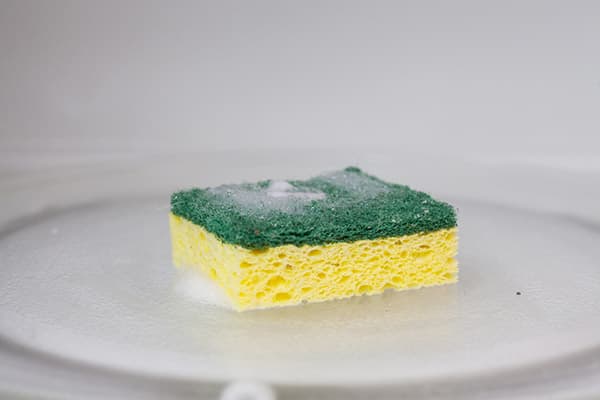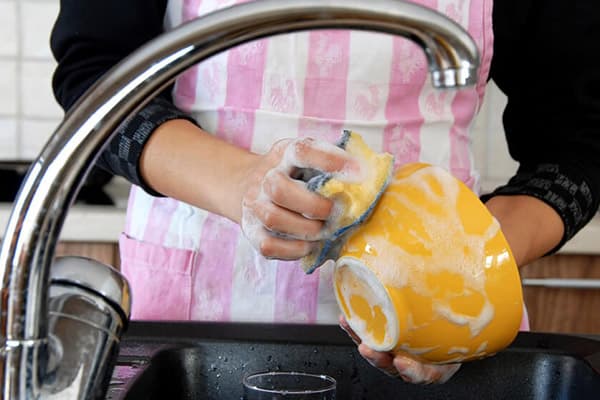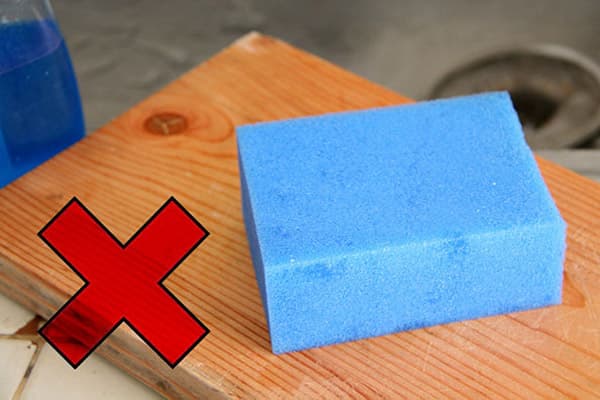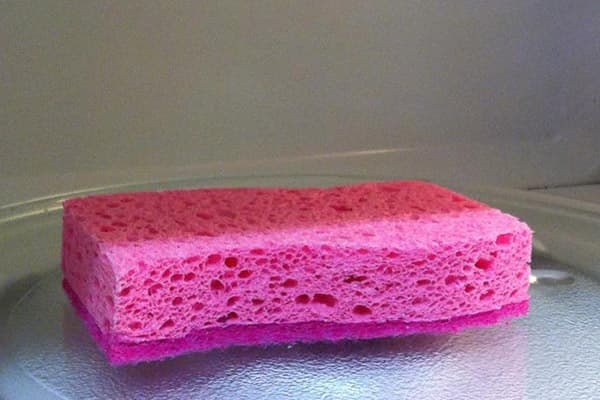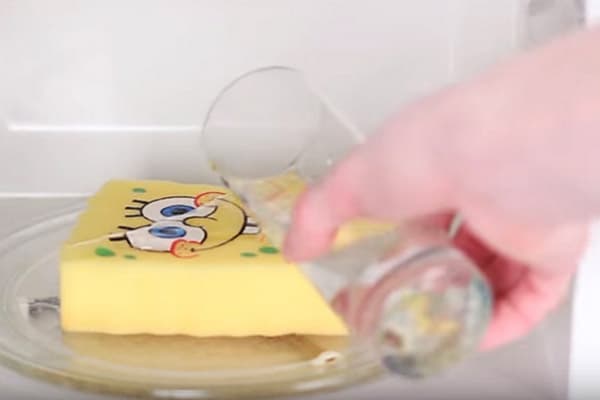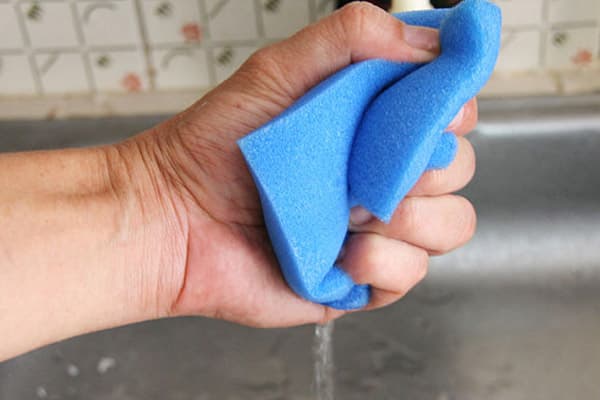Is sponge disinfection possible in the microwave?
Content:
Trying to save money, housewives often resort to the methods they themselves invented. One of these is microwave sterilization of a kitchen sponge. It is believed that such a procedure destroys all microorganisms that remain in the porous material, and, accordingly, extends the life of the sponges. Let’s try to figure out whether this is really so and whether any processing is needed at all.
Why sterilize a kitchen sponge?
It would seem that if you conduct a large-scale laboratory study, then the least bacteria can be found on a kitchen sponge. Firstly, it is touched only with clean hands, and secondly, it is constantly “washed”. However, this is a false impression.
Microbiota Colonies
Microbes and bacilli fall on the sponge in different ways.
- Primary seeding occurs at the production stage - those microorganisms that live in the air and are located on the surface of factory equipment penetrate the foam pores. However, this is not scary, because exactly the same invisible roommates are in every house and apartment.
- Subsequently, the bacteria are introduced inside while washing the utensils that were used to cut raw meat or fish. No less dangerous are the dishes that came into contact with raw dairy products purchased in spontaneous markets.
- Some bacteria also come from food debris, especially if they start to decompose.
- If one of the family members has infectious diseases transmitted by airborne droplets, pathogenic microbes remain on the plates and cutlery, which subsequently penetrate the sponge's porous material and can begin to multiply.
During a study conducted by scientists from the University of Furthwagen (Germany), 362 species of bacteria were found on kitchen sponges. This is even more than a toilet brush.
Other microorganisms
In addition to bacteria, yeast and mold fungi live and feel at ease in the foam. Depending on what types of fungi populated the sponge in a particular case, they can be much more dangerous than other microorganisms. In addition, it is incredibly difficult to deal with them, and when ingested, many types of mold (for example, the infamous Aspergillus) cause irreversible changes, including lethal ones.
Microwave Sponge Sterilization
To kill the pathogenic microflora that lives inside the dishwashing sponge, the housewives use a very simple method - microwave processing. Such a procedure is carried out every three days or more often if necessary.
Process description
Before proceeding directly to sterilization, the sponge is “washed” with a dishwashing detergent or a simple laundry soap. This is not necessary in order to remove part of the microbes mechanically, but in order to wash the remnants of food from the pores. If you put the sponge in the microwave without preliminary cleaning, it will acquire a persistent unpleasant odor (in this case, it will not be associated with the vital activity of bacteria).
Further actions look like this:
- Sponge impregnated with clean water. The more fluid the material picks up, the higher the chance that everything will go according to plan and that you don’t have to buy a new microwave oven.
- The sponge is placed on a plate (it must be ceramic, glass or made of special plastic).
- A cup, two-thirds full of water, is placed next to the sponge - this is a precautionary measure designed to prevent the accumulation of unused magnetic energy inside the device.
- Turn on the microwave for 1-2 minutes. It is advisable to set the power to 750 watts or more.
- When the oven turns off, you need to wait until the sponge cools down a little, since its temperature will be 100 ° C, and only then take it out and put it back.
During sterilization, do not leave the microwave. Despite the fact that the water with which the sponge is saturated protects it from melting, sometimes the foam rubber still begins to “melt” - in this case, turn off the heat immediately.
Of course, you should not treat metal scrapers in this way - sparks will appear inside the microwave.
Is there any effect?
Some people unfamiliar with the operating principles of the microwave oven give this device truly fantastic qualities. Unfortunately, this is just a heating device, and its effect on the microflora is exaggerated. In fact, the process described above simulates steam sterilization - it has a detrimental effect on most microorganisms known to science.
However, this effect is achieved not only and not so much due to the presence of steam. The heating temperature is of great importance - if in the microwave the water boils at 100 ° C, then in the autoclave the thermometer shows at least 130 ° C. The processing time also differs - a kitchen sponge spends in the microwave for several minutes, while sterilization in an autoclave takes no less than half an hour.
It turns out that such a short-term treatment in a microwave oven can kill only the least resistant microbes. They, as a rule, do not pose any danger to humans and are part of the natural microflora.
The consequences of sterilization
Mistresses, sterilizing the kitchen sponge in the microwave, hope that this will protect them from the pathogenic microflora and the diseases caused by it. In fact, the degree of risk increases - since weak microbes did not tolerate steam treatment, a place was vacated inside the pores, which were immediately occupied by stronger and more dangerous microorganisms.
The sponge removed from the microwave in most cases is stored in the same place where it was lying earlier, that is, in close proximity to the sink. There, bacteria get an ideal environment for reproduction, because they are warm and humid, which means that after a couple of hours a seemingly harmless piece of colored foam becomes a home bacteriological weapon.
How to handle the sponge?
To disinfect a kitchen sponge, it should be soaked in a 20% solution of sodium hypochlorite (popularly called bleach), and then autoclaved. However, foam rubber is unlikely to withstand such bullying, and the cost of the procedure is several times higher than the price of a new clean sponge. Therefore, you should not engage in sterilization at home - it is better to just throw away your old thing.
Whether to continue microwave sterilization after reading this article is up to everyone to decide. However, you should never forget that the price of a piece of foam rubber and human health are not comparable.
